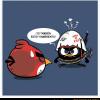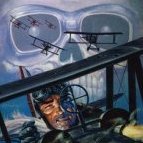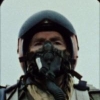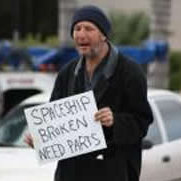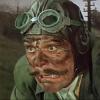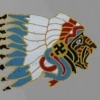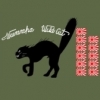Leaderboard
Popular Content
Showing most liked content on 10/25/2017 in all areas
-
5 pointsI continue my experiments with terrain tiles in an effort to make FE2 sorta/kinda resemble the flight sims of the mid-oughts. I've successfully tested 2048 airfield tiles and using jpg files drastically reduces the amount of data to be processed, so I'm hoping it will be possible to use 2048x2048 jpg terrain tiles for the entire map. The latest test 2048 art looks promising even though I need to improve the roads, cobblestone streets, furrows, etc. Click for hi-res images.
-
This post cannot be displayed because it is in a password protected forum. Enter Password
-
3 pointsBelow is a shot of Quack74's 1024 size art on a standard FE tile. I dropped some of my buildings onto the tile for scale effect. By increasing the art size to 2048, the increase in pixel density should be enough to sorta/kinda look realistic. Note this increase will only work in FE2 - only second generation games can run dds and jpg format art on ground tiles.
-
3 points
-
3 pointsNew site works fine for me. Being an old fart, adaptability is my only card these days.
-
3 pointsAnother consideration is jpg format degrades the depth of color. See below for the three main types of art files - bmp, dds, jpg - and their effect on the image. I can compensate for that to a limited degree by reducing the brightness of the finished art by just a hair.
-
2 pointsIIRC, Jackson said he was running FE1, on a late model machine If 10 is similar to 7 in "how" it reads the 1stGen games, installling to the C:/ProgaramFiles places it the protected area. What we've found out for SF1 is install the game to the ROOT of the C drive (C:/FirstEagles, for example), and adjust the shortcuts as needed. So, in essence, MOVE the entire game folder (very odd that it's called "WW1", and not FirstEagles) to the root of the C drive, adjust your shortcut and try again. It's a simple experiment, and in the long run should benifit in general game playing. But in all honesty, maybe you should upgrade you FE to FE2 in this later OS
-
2 pointsThe site shouldn't be a tough transition for you she's the same ole gal just wearing new lingerie. Hopefully everyone is enjoying the site and not having issues like the old site did. E
-
2 pointsView File MiG-21 bis Afghanistan War This is my attempt to present this skin, I did not find much information, this is a modification of the existing TW skin, I hope you will like it, there are two versions of the Soviet and Afghanistan MiG-21bis, you choose which one you like. Good hunting. Submitter strahi Submitted 10/24/2017 Category MiG-21
-
2 points
-
1 pointAlthough the target area editor in its current state only has viewing (and no editing) capabilities I decided to release a first version. Maybe someone find it already useful. For usage instructions read the readme.txt. I tested it with stock terrains, Rends germany terrain and the range terrain. Feel free to report bugs, feature wishes etc. TargetAreaEditorV0.1.zip Screenshot: Rends germany terrain, (now ex-) airbase near my hometown.
-
1 pointHmmm...so, I've been gone for awhile...Everything changed and I can't figure out this new site? Are we transitioning to something or is this the new normal? LOL...scratching my head... V
-
This post cannot be displayed because it is in a password protected forum. Enter Password
-
1 pointWhat specifically? The user side is very similar to the old one that I really thought the changes would be minimal to the members. What's really changed is the code that runs the place which is by far more compatible with the times and current with PHP and MySQL.
-
1 pointQuack74 has done some very creative work on his WIP Verdun map. He carefully made a city street grid match the building layout. I intend to explore this concept further, as it is the only way to make towns/cities look realistic.
-
1 pointTry using the extractor to extract the marked files from your 'ObjectData' catalogue. Create a folder 'cockpit' and move there all the received files (they appear in the 'Objects' folder of the game). Then move this "cockpit" folder to the DFWC5 folder. Maybe your FE doesn't like links to "external resources"?
-
1 point
-
1 pointWith Mue´s Tool box! https://combatace.com/files/file/15942-mues-toolbox/
-
1 point
-
1 pointView File MiG-21MF Afghanistan Air Force This is my attempt to present this skin, I did not find much information, this is a modification of the existing TW skin, I hope you will like it, there are two versions available, you choose which one you like. Good hunting. Submitter strahi Submitted 10/24/2017 Category MiG-21
-
1 pointJacksonM: can you post a screenshot of the game folder structure, and where you've placed the various files? something like below --> (mind you, FE2 in Win7) this way, we can visualize what might be off.
-
1 pointPerhaps this will help. On the other hand, in upload created by pcpilot , the cockpit call line in the aircraft ini file is written аs CockpitDataFile=DFCW5_cockpit.ini. Accordingly, the cockpit.ini file is called the DFCW5_cockpit.ini. It contains the call line 'Model Name = Fokker D7_cpit.LOD'. I do not think there is any mistake here. DFW C.V Screen and ini Pack
-
1 point
-
1 point
-
1 point
-
This post cannot be displayed because it is in a password protected forum. Enter Password
-
1 point
-
This post cannot be displayed because it is in a password protected forum. Enter Password
-
1 point
-
1 pointMiG-21UM Rework: will include minor Texture update, data edits & some new loadout options.
-
1 pointHad TSR2 Survived. Air Chief Marshal Sir Patrick Hine GCB GBE CBIM FRAeS Sir Patrick Hine’s reputation stretches far beyond the Royal Air Force where he shone as fighter pilot, commander and staff officer. His ability to inspire others by example was unparalleled in his generation and he is acknowledged as a military thinker of considerable clarity. Since his retirement, after command of all British Forces in the Gulf War, he has become Military Advisor to British Aerospace plc and is a much respected figure in international aviation circles. He is well suited to consider the likely effects ‘Had TSR2 Survived’. I was at the Staff College when the cancellation of TSR2 was announced in 1965, and at the end of that year I was posted as Personal Air Secretary to the Minister of Defence for the RAF – Lord Shackleton. As Sir Frank Cooper has told us, the general view in the MoD at the time, including that of the then CAS, was that cancellation had been inevitable – on the grounds of unaffordability and with rising costs that were out of control. But my remit today is to offer you a view of how things would look now if TSR2 had survived, then and subsequently. To do so I must make at least one assumption at the outset. And that is that, while the TSR2 project proceeded, the earlier cancellation of the P1154 stood. It is very important that I put that peg in the ground. In passing, I should say that I believe it was right to cancel the P1154. The highly effective off-base operating capability developed by the RAF on the Harrier could not have been achieved on the P1154 with its plenum-chamber burning reheat system which would have caused very severe ground erosion problems. In short, we would have been trying to run before we could walk, and that could have had a most adverse, if not fatal, impact on VSTOL in the RAF. Here then is my scenario. First, the RAF would, I believe, have got about a decade earlier the kind of capability it eventually enjoyed with the Tornado GR1. The avionics may not have been quite so well advanced, nor would the TSR2 have been so manoeuvrable, but it would have had longer legs, and in this respect have met the range capability called for in the FOAS Staff Target. But TSR2 would not, of course, have been stealthy. The bottom line is that TSR2 showed all the signs of being a better aircraft than its nearest competitor, the F-111, but there remains a big question mark over cost and therefore ultimate affordability and cost-effectiveness. Next, let us have a look at force structure. The TSR2 would have replaced the Canberra but, because of high costs, not on a 1 for 1 basis. Probably no more than 100 aircraft would have been procured. The RAF’s strike/attack/recce force would thus have become smaller, unless a second aircraft had been procured, for which money would almost certainly not have been available. You will recall that by 1965 the days of the V-bomber force were numbered as a result of the Polaris decision of 1963 and which the new Labour Government had endorsed. The Air Staff would probably have argued for more TSR2s to replace some of the V-bombers – but only once the programme was secure – and they may not have been successful. The TSR2 would have been used for nuclear strike/deeper recce, OCA and interdiction, but not, except in extremes, for OAS (BAI+CAS). It was not tailored for those missions and it would not have been cost-effective in the OAS role. Therefore, another aircraft would have been needed to replace the Hunters in the UK, Germany, Gulf and Far East. Would this second aircraft have been the Harrier or Jaguar, or something else, perhaps a multi-role fighter like the STOL F-16? I suspect it would have been the Harrier (HSA needed an order), and that the Jaguar would not have been procured – it was always the wrong (or certainly over-elaborate) aircraft for an advanced jet trainer (the original intention) and with its relatively high wing loading, was not optimised for CAS. In any event, the UK became involved in Jaguar as part of a collaborative package agreed with the French, where our real interest lay in the AFVG which was killed of by de Gaulle in 1967. The Lightning was planned to be run-on in the AD/Interceptor role into the late 1970s and, if TSR2 had survived, I very much doubt that the RAF could have afforded before then a new fighter as well as TSR2 and Harrier. By the mid-‘70s the need for a highly agile fighter like the F-15 or a multi-role FGA aircraft like F-16 or F-18 had been widely recognised throughout NATO. There was also the requirement to replace the F-104 and, in France, the Mirage III; thus an opportunity existed for a collaborative programme in Europe, as an alternative to procurement of an American fighter. Industry here in the UK would have pushed hard for a European programme for an agile fighter – as would the RAF. But that option was effectively ruled out following the cancellation of TSR2 and AFVG, and with the Tornado programme launched instead, because industrial, economic and political arguments de facto forced the RAF down the Tornado ADV path. In passing, I would comment that the Tornado was never a real MRCA, and the ADV certainly was not an air superiority fighter. It was a long endurance interceptor and has given good service in that role. So, if TSR2 had survived, it is likely that the UK or Europe would have developed an EFA-type fighter ten years earlier than was the case. The lessons learnt on the Jaguar and Tornado collaborative programmes would then instead have been learnt on the EFA programme, but nonetheless a good product would probably have resulted. Moreover, it is less likely perhaps that the French would have gone their own way on the new agile fighter, as they did in the late ‘80s with Rafale. Under this plot, there would almost certainly not have been a Buccaneer in service with the RAF, unless money had been available to fill out the force structure. I doubt it: I believe the RAF would have had only TSR2 and Harrier in the offensive roles. In the longer term, therefore, the RAF’s combat aircraft front line would have been: TSR2, Harrier and the Lightning replacement. As it was, in 1982 we had the Lightning, Phantom, Harrier, Jaguar and Buccaneer in service. We also still had some Canberras operating in the recce role – and still do. We thus had six types instead of three, moreover, without TSR2, the V-bombers had to be run on for longer than necessary – awaiting the entry into service of the Tornado GR1. Overall, therefore, in logic there should have been considerable savings in the logistics support area if proper fleet rationalisation around TSR2 had been effected. The big unknown, of course, is how costly TSR2 would have been, both in capital and life-cycle cost terms; and what impact that would have had on the affordability of Harrier to replace Hunter and a new fighter to replace the Lightning. Also, of course, on the size of the RAF’s front line. A TSR2, Hunter, Lightning fleet into the 1980s would have been feasible but is not one that would have appealed to me. Another question that comes to mind is, ‘Who would have designed and produced the new agile fighter to replace the Lighting?’ With BAC as prime contractor on the TSR2 and HSA on the Harrier, it could have gone either way, or it could have been an issue that brought forward the formation of the nationalised BAe. We shall never know but there are people here today who will have a view. My own is that the design lead would have gone to Warton given their experience by then on supersonic aircraft. For me the seeds of destruction of the TSR2 programme were sown back in 1959/60 when inadequate attention was paid to cost/performance trade-offs before endorsement of the operational requirement on which the contract was finally based. That costs then rose so dramatically, particularly at a time when industry was being forced to rationalise across different cultures, is not too surprising, and by 1964 when the first prototype flew, the die was probably cast and the balance of arguments that the MoD and HMG had to address at that time inexorably led to a cancellation decision. In this respect, I agree with Sir Frank Cooper. But that was a great shame, for an affordable TSR2 to the right specification would have given the RAF the world’s most capable TSR aircraft and one with at least some potential in the export market (whereas TSR2 had virtually none when it was cancelled). For the reasons I have given, the RAF’s front-line inventory would (or should) have been more coherent than it is today and the Service would probably have had an air superiority fighter at least ten years earlier. I doubt that, structurally, industry would have looked much different than it does today, except perhaps the process of consolidation in Europe might have been accelerated. Frankly, I doubt it: the real driving force there has been the pace of rationalisation in the US since the ending of the Cold War and the formation (or prospective formation) of mega-giants like Lockheed Martin, Boeing McDonnell Douglas and Raytheon/Hughes.
-
1 pointIAI 'Yaeger' (Hunter) - 201 Squadron, Heyl Ha'Avir, 1973 Comrad's superb Libyan skin!
Important Information
By using this site, you agree to our Terms of Use, Privacy Policy, and We have placed cookies on your device to help make this website better. You can adjust your cookie settings, otherwise we'll assume you're okay to continue..


